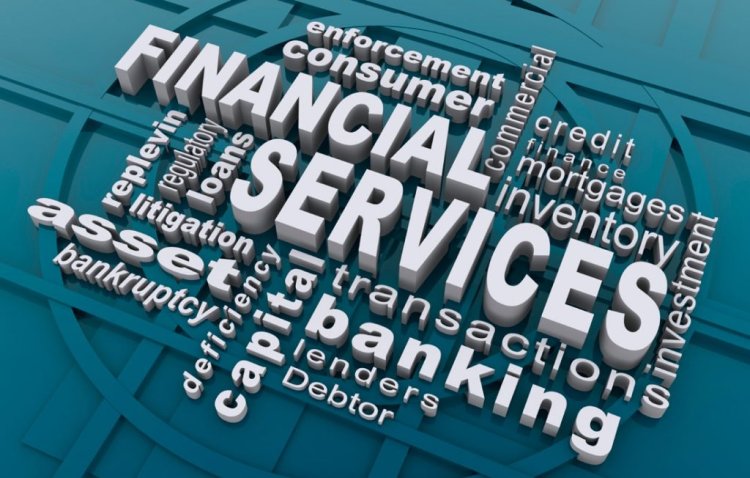Banking Definition: What Is Banking & How Does It Work?
The finance and banking sector plays a vital role in the world's economy. For example, the world gross domestic product is valued at $79 trillion.
How Banking Works, Types of Banks, and How To Choose the Best Bank for Us
What Is a Bank?
A bank is a type of financial institution authorized to receive deposits into deposit accounts and to extend credit in the form of loans. Safe deposit boxes, foreign currency exchange, certificates of deposit, and individual retirement accounts are all services that banks offer.
There are a few distinct categories of financial institutions, including investment banks, commercial banks, and retail banks.
Both the federal government and individual states have authority over banking in the United States.
KEY POINTS
- A bank is a financial institution licensed to receive deposits and make loans.
- There are several types of banks including retail, commercial, and investment banks.
- In most countries, banks are regulated by the national government or central bank.
Understanding Banks
The earliest evidence of banks dates back to the 14th century. They offer a secure place to save money and a way to get loans for things like home improvement or business expansion. The money deposited is then loaned out by the banks, from which interest is earned.
Since the Medici family dabbled in banking during the Renaissance, the core business concept hasn't altered much, but banks now provide a wider variety of products.
Basic Bank Services
Banks offer various ways to stash your cash and various ways to borrow money.
Checking Accounts
Consumers and businesses alike make use of checking accounts to make deposits into, and withdrawals from, in order to pay bills and access funds. They often come with monthly fees, use fees, or both, and provide very low interest rates, if any at all.
Almost all consumers these days have their paychecks and other regular payments transferred into one of these accounts automatically.
Savings Accounts
Savings accounts pay the depositor interest. Depending on how long they intend to keep their funds in the bank, account holders can choose between an ordinary savings account that pays a small amount of interest and a certificate of deposit (CD) that pays a slightly higher rate of interest. These certificates of deposit can generate interest for as little as a few months or as long as five years or more.
It is essential to note that the Federal Deposit Insurance Corporation (FDIC) insures up to $250,000 of the funds in checking accounts, savings accounts, and certificates of deposit.
Loan Services
Banks provide consumer and corporate loans. The money deposited by customers is lent to other customers at a higher interest rate than the depositor receives.
This is the process that maintains the economy humming at the highest level. People deposit money in banks, which then lends it out in the form of auto loans, credit cards, mortgages, and business loans. The loan recipients spend the money they borrow, the bank earns interest on the loans, and the process keeps money circulating in the economy.
As with any other enterprise, the objective of a bank is to generate a profit for its proprietors. The majority of banks are owned by their shareholders. Banks accomplish this by charging debtors a higher interest rate on loans and other forms of debt than those who use their savings vehicles.
For instance, a bank may pay 1% interest on savings accounts and 6% on mortgage loans, resulting in a 5% gross profit for its proprietors.
Brick-and-Mortar and Online Banks
There is a wide difference in the size of banks, from local credit unions to multinational financial conglomerates.
As of 2021, the FDIC reported that there were slightly more than 4,200 commercial banks in the United States that were eligible for FDIC insurance.
All types of banks are counted here, from national banks to state-chartered banks to commercial banks and more.
These days, you can bank with a traditional financial institution at either a physical branch or entirely online. The first fully digital banks appeared at the turn of the decade.
Customers evaluate various aspects of a bank, including its interest rates, fees, and accessibility before deciding to open an account there.
How Are Banks Regulated?
After the worldwide financial crisis of 2008, U.S. banks came under close scrutiny. As a result, banking regulations became much stricter.
Banks in the United States may be subject to state or federal oversight, or both, depending on how they are organized. Each state has a banking or financial institutions department that oversees state-chartered banks. This organization oversees things like banking regulations and interest rates, and it conducts audits and inspections of financial institutions.
The Office of the Comptroller of the Currency (OCC) is responsible for overseeing national banks. Banks' capital, asset quality, and liquidity are the primary concerns of OCC rules. As was previously mentioned, the FDIC is also responsible for regulating insured banks.
Dodd-Frank Act The purpose of the 2010 Wall Street Reform and Consumer Protection Act was to lower the probability of another financial crisis in the United States. This law mandates periodic capital adequacy assessments for large banks to ensure they can weather adverse economic conditions. A stress test is the name given to this routine annual evaluation.
Types of Banks
Most banks can be categorized as retail, commercial or corporate, or investment banks. The big global banks often operate separate arms for each of these categories.
Retail Banks
To better serve their customers, retail banks typically have both a main office and a network of branch locations.
Checking and savings accounts, home and auto loans, overdraft protection, and other financial products and services are only some of what they offer. A lot of them also accept credit cards.
They also provide opportunities to put money into certificates of deposit, mutual funds, and IRAs. Larger commercial banks offer private banking and wealth management services to their high-net-worth customers.
Retail banks like TD Bank and Citibank are common examples.
Commercial or Corporate Banks
Commercial banks, often known as corporate banks, specialize in providing financial services to businesses of all sizes. These financial institutions provide their business clientele with a full range of banking services, including trade finance, employer services, commercial real estate services, cash management, and credit services.
Commercial banks include instances like JPMorgan Chase and Bank of America, which also operate sizable retail banking departments.
Investment Banks
Investment banks specialize in facilitating sophisticated financial transactions and services for corporations, such as underwriting and M&A advisory services. Their primary role in these exchanges is that of financial middlemen.
Hedge funds and pension funds as well as governments and huge enterprises are among its customers.
Among the largest investment banks in the United States, Morgan Stanley and Goldman Sachs stand out.
Central Banks
The public does not interact directly with central banks like they do with the aforementioned institutions. The government of any given country delegated authority over the money supply and monetary policy to an autonomous entity known as the central bank.
Therefore, central banks are answerable for maintaining both currency and economic order. They're responsible for setting standards for banks' reserve and capital ratios, too.
The Federal Reserve Bank of the United States acts as the country's central bank. Bank of England, Bank of Japan, Swiss National Bank, and People's Bank of China are only some of its equivalents around the world.
Bank vs. Credit Union
Credit unions offer banking services but, unlike banks, they are not-for-profit institutions created for and managed by their members or customers. Credit unions provide routine banking services to their clients, who are generally called members.
Credit unions are created, owned, and operated by their clients, and are generally tax-exempt. Members purchase shares in the co-op, and that money is pooled together to fund the credit union's loans.
They tend to provide a limited range of services compared to banks. They also have fewer locations and automated teller machines (ATMs).
How Do I Know My Money Is Safe in a Bank?
To ensure financial security and public trust, Congress established the Federal Deposit Insurance Corporation (FDIC), an autonomous institution. The FDIC monitors and audits financial institutions to guarantee the security of customer funds.
Even better, it safeguards the cash you invest. For each account ownership category, the maximum amount that can be covered is $250,000.
You are under no obligation to buy this protection. In the event of loss, if you have funds on deposit at an FDIC-insured bank, you are protected.
You can search for FDIC-insured banks and branches using the BankFind tool on the FDIC's website.
Are Any Non-Bank Accounts Insured?
When a member brokerage business goes under, the Securities Investor Protection Corporation (SIPC) steps in to help customers get their money and assets back. In 1970, Congress established SIPC as a tax-exempt organization. All U.S. brokerage firms that are members of SIPC offer their clients protection. A brokerage firm's holdings include not only equities and bonds but also cash. Rarely do brokerage businesses fail or close suddenly, but when they do, the SIPC assists with the liquidation process and sets up claims procedures to safeguard investors' assets. Your securities account is protected by SIPC up to $500,000. Your checking account balance can never exceed $250,000. Follow this link to get a directory of all current SIPC participants.
Should I Choose a Retail Bank, Credit Union, or Commercial Bank?
You should give some thought to whether or not you want to keep your business and personal banking with the same institution. Everyday banking needs are best served by a retail bank, which offers consumers the most fundamental financial services. If you don't want to or need to physically visit a bank branch, you have the option of using either a traditional bank with a real structure or an online bank. You might join a credit union, which is a non-profit organization that provides financial services to members who share an employer, union, or other professional affiliation.
What Other Factors Go Into Choosing a Bank?
There's also the issue of how big a bank is. If you frequently travel throughout the United States for work or pleasure, you may want to open an account at a large retail bank with a household name. You might potentially avoid paying any foreign ATM fees and still have easy access to your money while abroad.
If you want better service and more options, you might do better in a local, community bank. A community bank, which operates on a local level by accepting deposits and making loans, may provide a more personable banking experience.
If you want to use a traditional bank, pick one with a branch near your home or place of work. You shouldn't have to go far to receive cash if you need it in an unexpected financial situation.
Check to see if the bank you're considering also offers things like safe deposit boxes, credit cards, and loans. There are certain banks that have helpful apps for smartphones.
Before committing to any new accounts, be sure you understand the costs involved. Loan interest isn't the only thing banks make money off of, though; there are also monthly service fees, overdraft fees, and wire transfer fees. An key factor could be the elimination of overdraft fees by some large banks in 2022.
Read Also :















.jpeg?updatedAt=1701438862359)
.jpg?updatedAt=1699725479734)

.jpeg?updatedAt=1698938156449)


